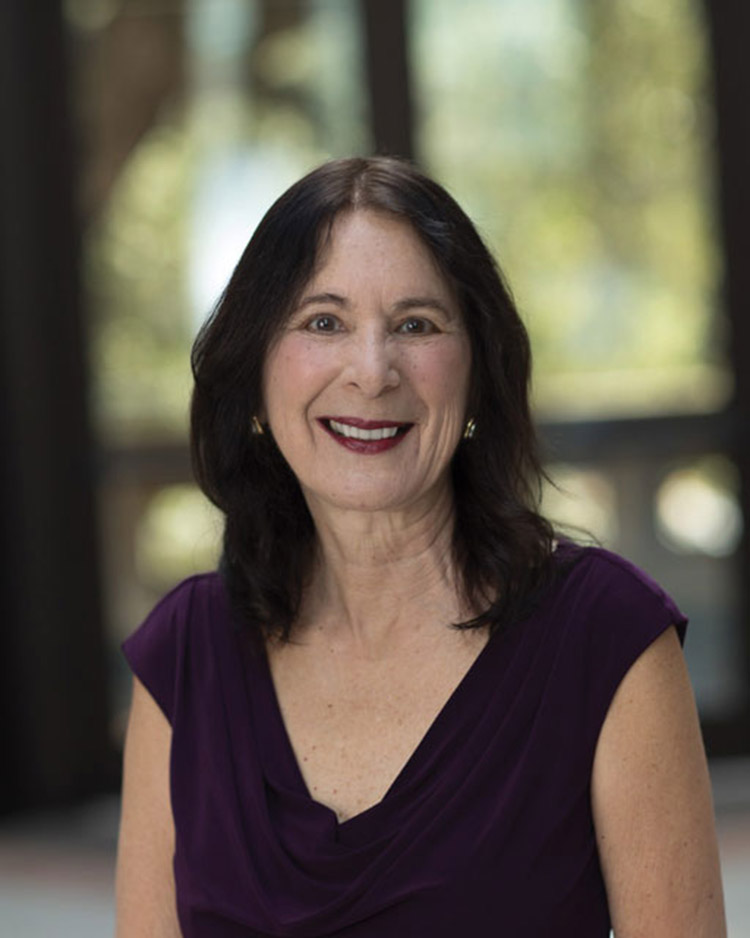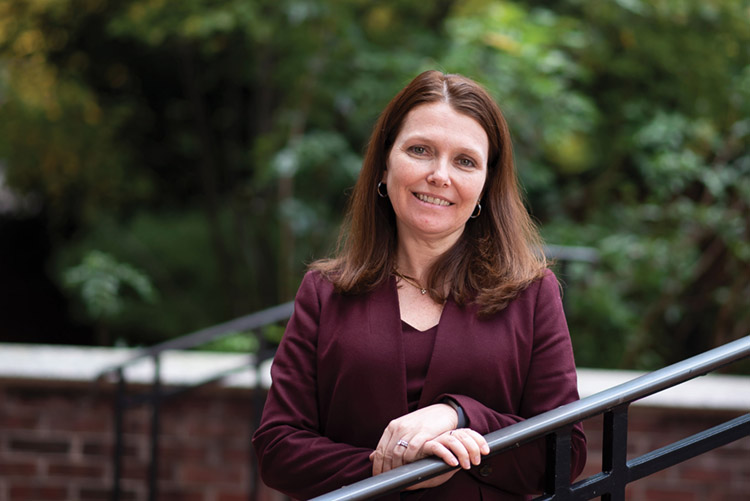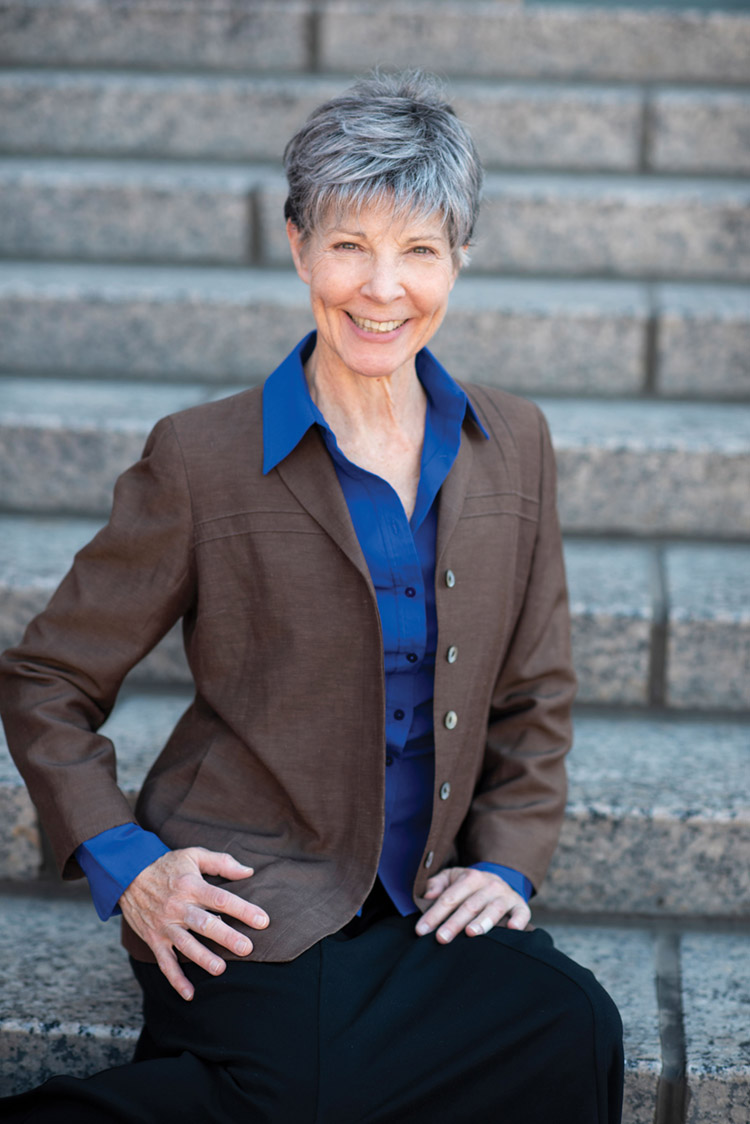Recent equal pay lawsuits by female law professors has shined a light on academic compensation process

Photo illustration by Brenan Sharp/Shutterstock
Linda Mullenix has 39 years of experience teaching law school. She’s published more than 80 law review articles and has written or co-written 22 books. She’s also an elected member of the American Law Institute and a fellow of the American Bar Foundation. She says her average student evaluation from 2017-2019 was 4.75, the second-highest rating in her senior professor cohort at the University of Texas School of Law.

Photo of Linda Mullenix by Brian Birzer
Mullenix’s annual salary, however, is at least $31,000 less than three male law professors at her school. Like Mullenix, some of these male professors teach civil procedure. However, they have had shorter careers and fewer publications than she has, and for the most part, similar student evaluations, according to the Equal Pay Act lawsuit she filed in the U.S. District Court for the Western District of Texas in December 2019. The complaint also alleged sex discrimination and retaliation under Title VII of the Civil Rights Act of 1964. Additionally, she alleged her raise for the 2018-2019 academic year was only $1,500, while other UT law professors with fewer accomplishments received $10,000 raises.
And this is not the first time Mullenix has complained to the university about compensation issues. In 2011, she retained counsel and sent a demand letter asserting an equal pay claim after she discovered a male professor with less experience annually earned $50,000 more than she did. Eight years later, that pay gap had decreased—by $17; that professor now earns $49,983 more than Mullenix, per her 2019 lawsuit. As a result of her actions, she has been described as “poison” by school administrators, according to the complaint, because she repeatedly speaks out about pay inequity at the law school.
In May, a Texas federal judge granted the university’s motion to partially dismiss Mullenix’s lawsuit on the basis that she failed to allege a causal connection between her pay complaints and receiving the lowest raise of any law school faculty member. The order dismissed Mullenix’s Title VII retaliation claim; her Equal Pay Act and sex discrimination claims are ongoing.
Mullenix’s lawyer, Colin Walsh of the Austin firm Wiley Walsh, told the ABA Journal he will continue with her Title VII discrimination and Equal Pay Act claims and looks forward to entering the discovery phase. Meanwhile, a spokesman for the university told the Journal the institution “strongly supports” equal pay based on merit and performance, and it has done work to ensure salary equity for faculty members. Law school faculty pay, he wrote in an email, is decided by “a committee review of teaching, service and scholarship with professional criteria applied to make these determinations.”
At least five equal pay lawsuits have been filed by female law professors since 2016; the actions involve four schools. One of those schools has been sued more than once, and three of the lawsuits remain open.
Although law schools may rely on several factors in determining compensation, in actuality, law school deans often have significant discretion in deciding what to pay professors, and their unchecked decisions can be tainted by gender bias, according to lawyers interviewed by the ABA Journal. Salaries, raises and appointments should be based on teaching, service and scholarship. But dean evaluations in those areas can be biased as well, some say, with men getting better appointments and more respect for their research and writing, with little regard for the work’s quality and importance.
Moreover, professors who have filed Equal Pay Act claims have seen their careers impacted in other ways. For instance, more than one used the word “poison” to describe how they were viewed after confronting law school leadership with discrimination concerns. Others found themselves removed from important faculty committee assignments (a factor used in determining pay) and put on “‘do nothing’ committees.”
‘Institutional misogyny’
Walsh says pay discrimination against women is just as much of a problem in the law schools as it is in the private sector.
“It may be a bit worse because of instances of institutional misogyny. Any place you have a large contingency of older white men, you’re going to have a pay gap,” Walsh adds.
In all of the Equal Pay Act lawsuits, plaintiffs say they were treated worse by the schools after suing.
“People who violate the norms get punished. Whether that is demanding equal pay, demanding to get the same quality of work as a nonminority or demanding to be spoken to with dignity, norm violators get punished. And for too long, women were expected to sit down, be quiet and follow the lead of men,” says Fitzgerald Bramwell, a Chicago litigator.
He previously represented Sumi Cho, a female Asian American DePaul University College of Law professor who in 2018 brought two federal lawsuits against the university, one alleging civil rights violations and the other Equal Pay Act claims. The latter alleged Cho—who has been at the law school since 1995 and is described as one of DePaul Law’s most-cited academics—annually earned $80,000 less than two male professors at the law school. In late August, the U.S. District Court for the Northern District of Illinois partially dismissed Cho’s Title VII action. In a separate September filing with the same court, Cho and DePaul agreed to mediation for the Equal Pay Act case.
In addition to the Equal Pay Act complaints filed against the University of Texas and DePaul, female law professors recently filed similar actions against the University of Denver and the University of Nebraska.
“It’s just plain dangerous to sue an employer, which was one reason it seemed important to me. I knew they couldn’t get rid of me, and I knew they didn’t dare cut my salary,” says Lucy A. Marsh, a tenured civil procedure professor at the University of Denver Sturm College of Law. She filed a 2013 complaint with the U.S. Equal Employment Opportunity Commission regarding pay for female professors.
Marsh, who was named a professor of the year in 1985 and received an excellence in teaching award in 2010, adds that she felt like “poison” after filing the EEOC charge. She even avoided simple things like walking to and from the school parking lot with colleagues.
“I knew it would be dangerous for other faculty to be seen talking to me. It was clear that salaries were based on who the dean liked, and of course, the dean didn’t like me after I filed a lawsuit,” Marsh says.
Martin Katz, who was the dean at the time, is now a law professor at Sturm. The employment and constitutional law scholar did not respond to an ABA Journal interview request.
According to a U.S. District Court for the District of Colorado complaint the EEOC filed against Sturm in 2016, the mean annual salary for male law professors there in 2013 was approximately $159,721, while for women it was $139,940. That same year, the one in which she founded the school’s Tribal Wills Project, Marsh’s annual salary was $111,977.
On average, full-time female professors at Sturm annually earned nearly $20,000 less than their male colleagues, according to the complaint.
Marsh, the charging party in the lawsuit, was hired as an assistant law professor in 1976 and promoted to full law professor in 1982, at which point her annual salary was $37,320. A male law professor who was also hired and promoted to full professor the same years as Marsh was paid $40,500 in 1982, according to the complaint. By 2013, he was earning in excess of $75,000 more than Marsh.

Photo illustration by Brenan Sharp/Shutterstock
Discretionary discrepancies
Pay discrepancies often start in the faculty hiring process, according to Deborah Thompson Eisenberg, a law professor at the University of Maryland Francis King Carey School of Law who also directs its Center for Dispute Resolution. “What I found was that when there are conditions of ambiguity and a lack of clear guidelines about how pay should be established, if you combine that with conditions where there was a lot of negotiations to establish pay and a lot of discretion is given to the deans, that’s where you are going to get the widest disparities that can’t be explained by differences in the positions,” says Eisenberg, who wrote about the Equal Pay Act in the 2016 book The American Middle Class: An Economic Encyclopedia of Progress and Poverty.
Service, which includes committee work, makes up one piece of how law schools determine faculty pay and promotions. While universities may say all committee appointments are important, the truth is that some are much more prestigious than others, and gender bias plays a role in keeping women who have been vocal about gender discrimination off the prestigious committees, according to plaintiffs in various Equal Pay Act filings.
The appointments can also be taken away as a punishment for speaking out, according to a lawsuit filed by Josephine Potuto, a constitutional law and sports law professor at the University of Nebraska who claims she lost her position as the university’s faculty athletics representative because she complained about pay. Within one week of filing a state court complaint alleging pay disparities for women at the university, Potuto was made aware that she would be replaced in the position. The disparities had been identified for several years, but the university took no action for correction, according to the complaint, which was removed to Nebraska U.S. District Court in 2020. The action remains ongoing.

Deborah Thompson Eisenberg: When “a lot of discretion is given to the deans, that’s where you are going to get the widest disparities that can’t be explained by differences in the positions.” Photo by Larry Canner.
Potuto joined the University of Nebraska College of Law in 1974 and was paid substantially less than two men hired in 1976 and 1977, her filing states. She became a full professor in 1981, and in 1988, she was awarded the Richard H. Larson professor of constitutional law chair. Potuto is the most senior faculty member at the law school, has published various books and articles, and has testified at the invitation of legislative committees and commissions.
“For decades, defendant has paid female professors substantially less than their male counterparts. Notwithstanding plaintiff’s stellar qualifications, credentials, experience, skills, abilities, notoriety, awards, honors and accolades, professor Potuto is no exception to this unlawful employment practice,” the complaint states. It also alleges state and federal Equal Pay Act violations as well as retaliation and violations of equal protection, the First Amendment and gender discrimination under Title VII of the Civil Rights Act.
Neither Potuto nor the university responded to ABA Journal interview requests.
Mullenix’s action claims she was assigned to “‘do nothing’ committees” that had no meaningful impact on law school governance. It also states her requests to serve on the budget committee, which the complaint describes as “prestigious,” were rebuffed.
Likewise, Cho’s lawsuit alleges she was excluded from high-profile committees. At Sturm, there was a lot of favoritism involved in who was selected for important committees, according to Marsh. She adds that not-so-important committees often require a lot of work for little if any career rewards. “I was on a committee to discuss the philosophy of the library. For the most part, it was worthless,” Marsh says.
Besides service, law schools also rely on scholarship and teaching, including student evaluations, to determine faculty pay and promotions. Gender bias is also a problem in scholarship evaluations, according to Joan Howarth,the former dean of Michigan State University College of Law. It’s hard to measure academic success, she adds, and there are underlying assumptions about which work is important.
“So of course, value judgments about scholarly impact and quality are distorted by bias,” says Howarth, adding that student evaluations of professors can also be biased. “Conventional attractiveness is highly relevant to success on student evaluations.”
A 2018 article published by PS: Political Science & Politics, an academic journal, examined student evaluations for women and men teaching an identical online class. The men received higher evaluation scores than the women, and the students referred to the men as professors in their comments. Women were more frequently referred to as teachers, and the reviews more frequently addressed the women’s personalities and appearances.

Shutterstock
Opening the black box
The University of Denver is a private institution, and women at the law school didn’t realize how much less they were paid than men until the EEOC complaint was filed, says K.K. DuVivier, a civil procedure and energy law professor there. She and six other female Sturm professors met with Katz, thinking they could work out the pay discrepancies without joining the EEOC lawsuit. Instead, DuVivier says, they were told their compensation was correct. “Which is basically saying, ‘You are inferior to the men.’”
She and the other professors joined the EEOC lawsuit as intervenors, and the parties entered a consent decree in 2018. It included a $2.66 million monetary award and an agreement that the law school would share faculty salary information with professors.
And that was how Rashmi Goel, a tenured associate professor who teaches criminal law at Sturm, discovered after the consent decree that her annual salary was $30,000 less than the average salary of 11 other associate law professors, 10 of whom are men and/or non-Asian. She had been at the law school longer than any of the other associate professors, according to the Equal Pay Act lawsuit she filed in 2019.
“The failure to do anything when they knew the information was going to be posted is part of the fundamental problem. It’s reacting after the fact, and not taking a proactive approach to equal pay. That’s what continues to be frustrating to me. If she was a man, none of this would have happened,” says Charlotte Sweeney, a partner with Denver’s Sweeney & Bechtold, who represented Goel and the Sturm intervenors in the EEOC action.

Photo of K.K. DuVivier courtesy of University of Denver Sturm College of Law.
The university and Goel filed a joint motion to dismiss the case in January, which was granted by the court in April. Goel did not respond to an ABA Journal interview request. In a statement to the ABA Journal, the university wrote that its law school is committed to pay equity and has worked hard to reevaluate and reset its systems.
Janilyn Daub, an employment partner with Barnes & Thornburg, says female academics who file Equal Pay Act claims often have been at their schools a long time. A good pay analysis study, she adds, can point out wage problems for a university, and she strongly advises fixing any pay disparities that can’t be explained as soon as possible.
“It’s a worse situation when something has been brought to the attention of administration,” Daub says.
The Indiana employment lawyer also says commissioning a pay analysis study and fixing income discrepancies that can’t be explained is better handled by university leadership than a law school dean.
“In most schools, a law school is just one part of a bigger institution. Lots of times, the study is coming from the general counsel’s office, looking at school by school and position by position to make sure the pay is equitable. It’s hard to put that pressure on a particular dean,” she adds. “I also recommend that such analyses be conducted by a third-party statistician and under attorney-client privilege.”
But unless a law school is being sued or faces a direct threat of being sued, money to fix pay discrepancies often must come from a law school’s general budget, which may already be very tight, says Howarth, now an interim associate dean at the University of Nevada Las Vegas William S. Boyd School of Law. And even if a law school faces the threat of being sued, she adds, universities may not give additional funds to fix faculty pay disparities.
“And that’s the problem. It’s not hard to correct problems when you have lots of resources. But when resources are limited, you are essentially saying, ‘I’m going to make equity adjustments over here, and that means reducing potential resources over there,’” Howarth says.
Despite all of the obstacles she’s faced, Marsh thinks pushing back against gender discrimination has brought her some respect. In June, the University of Denver approved the Lucy A. Marsh Scholarship, funded by donors, which she says is in honor of her equal pay fight.
This story was originally published in the October-November 2020 issue of the ABA Journal under the headline: “Pay Check: A recent spate of gender discrimination and equal pay lawsuits filed by female law professors has shined a light on the otherwise opaque academic compensation process”
Write a letter to the editor, share a story tip or update, or report an error.


